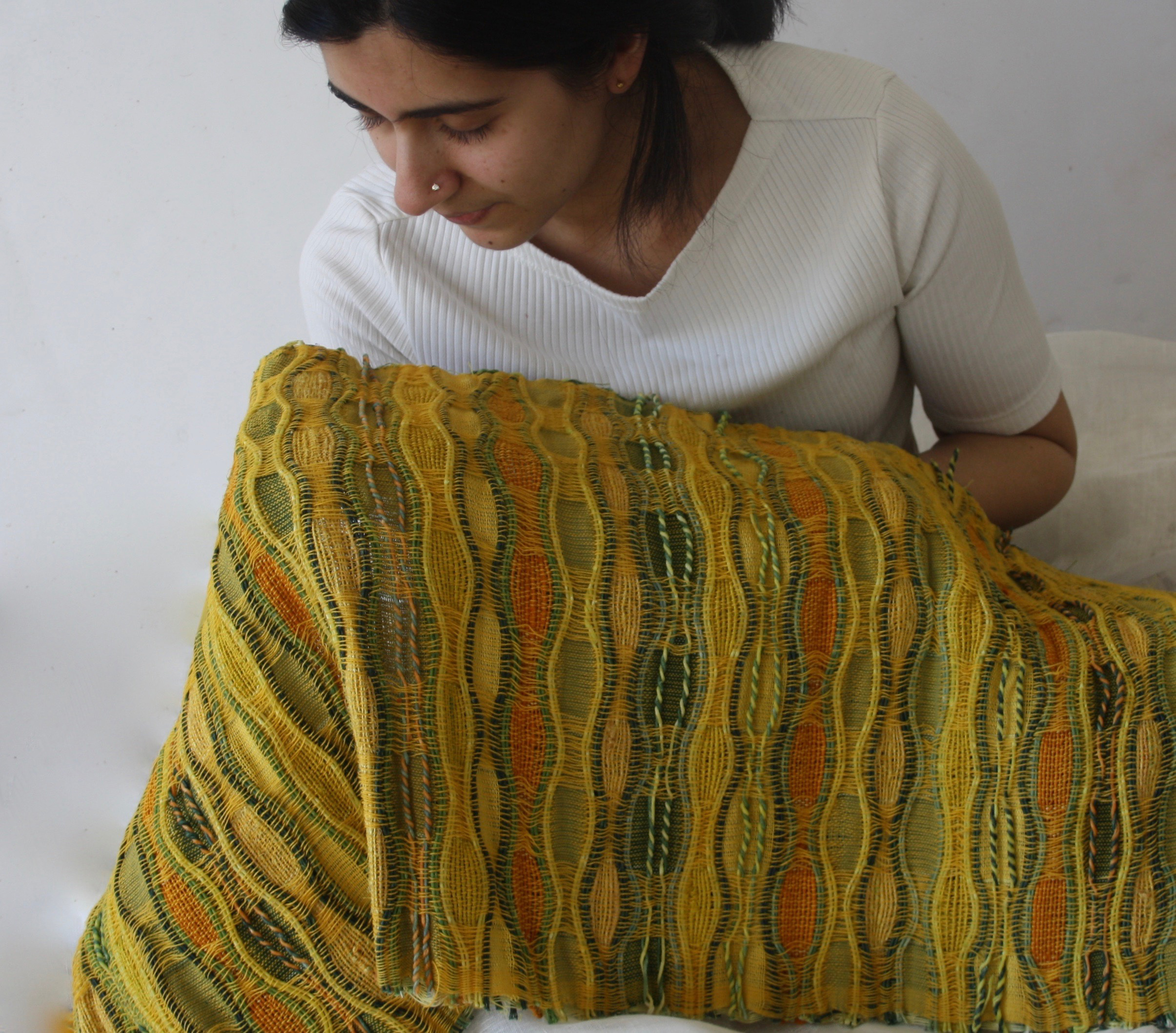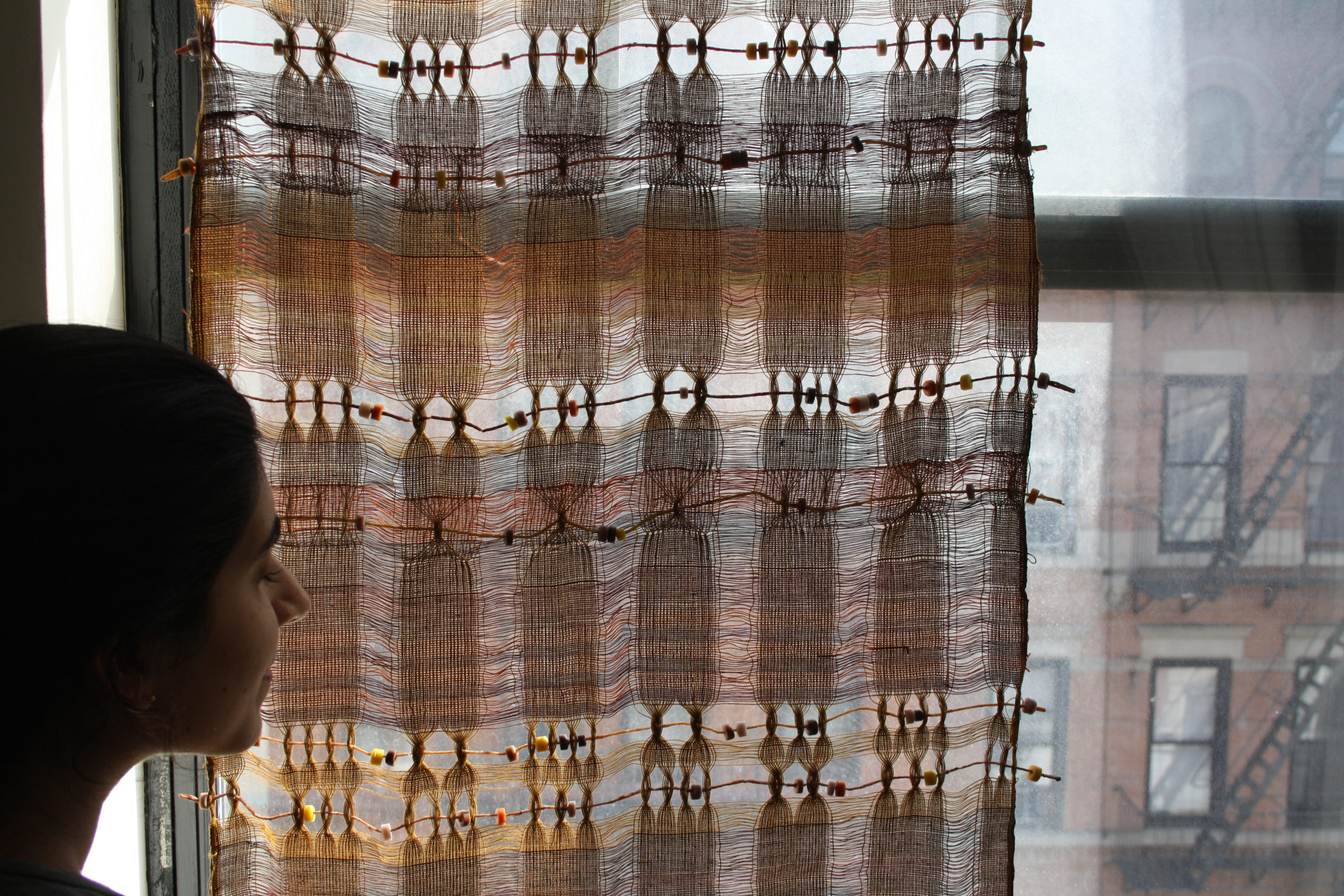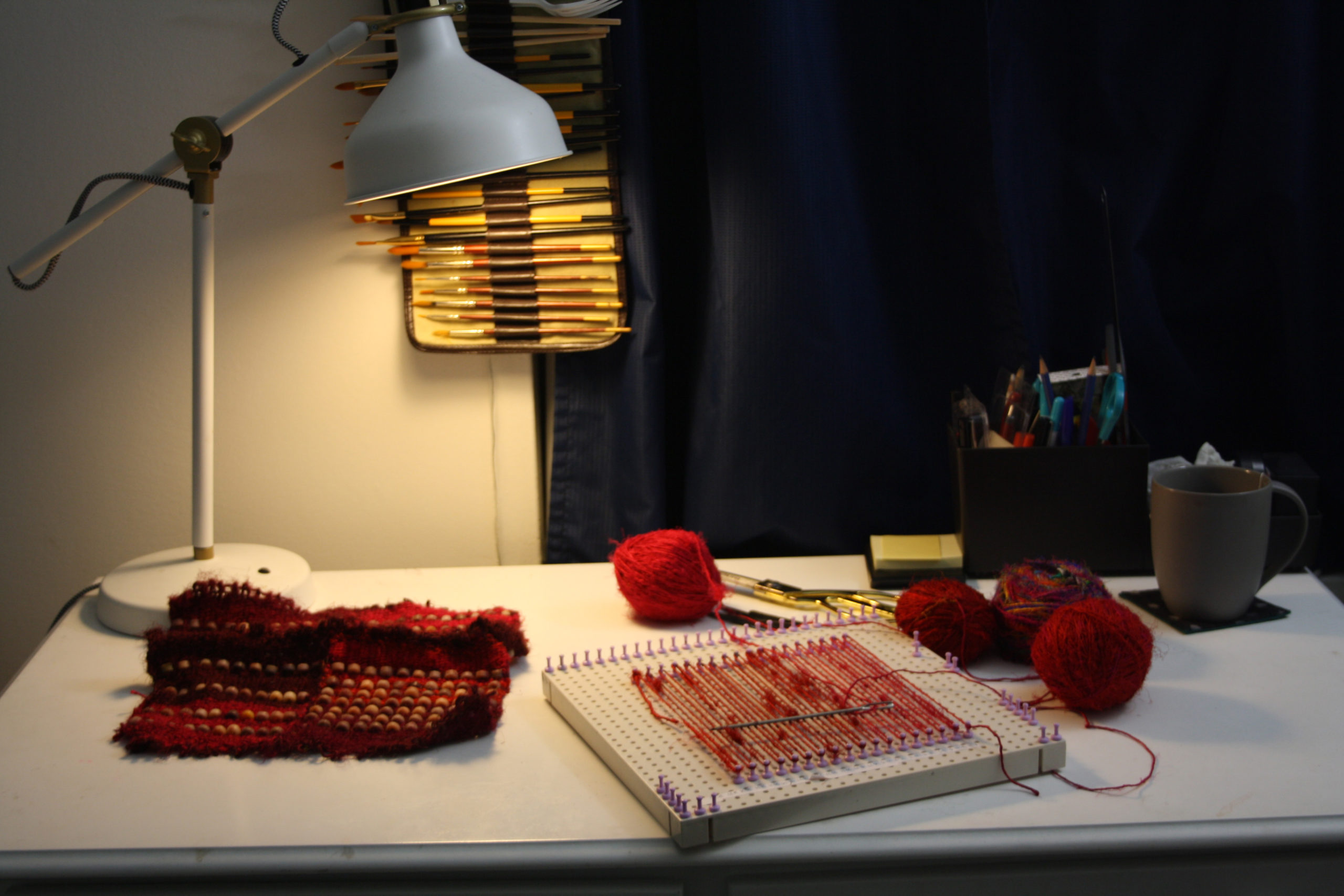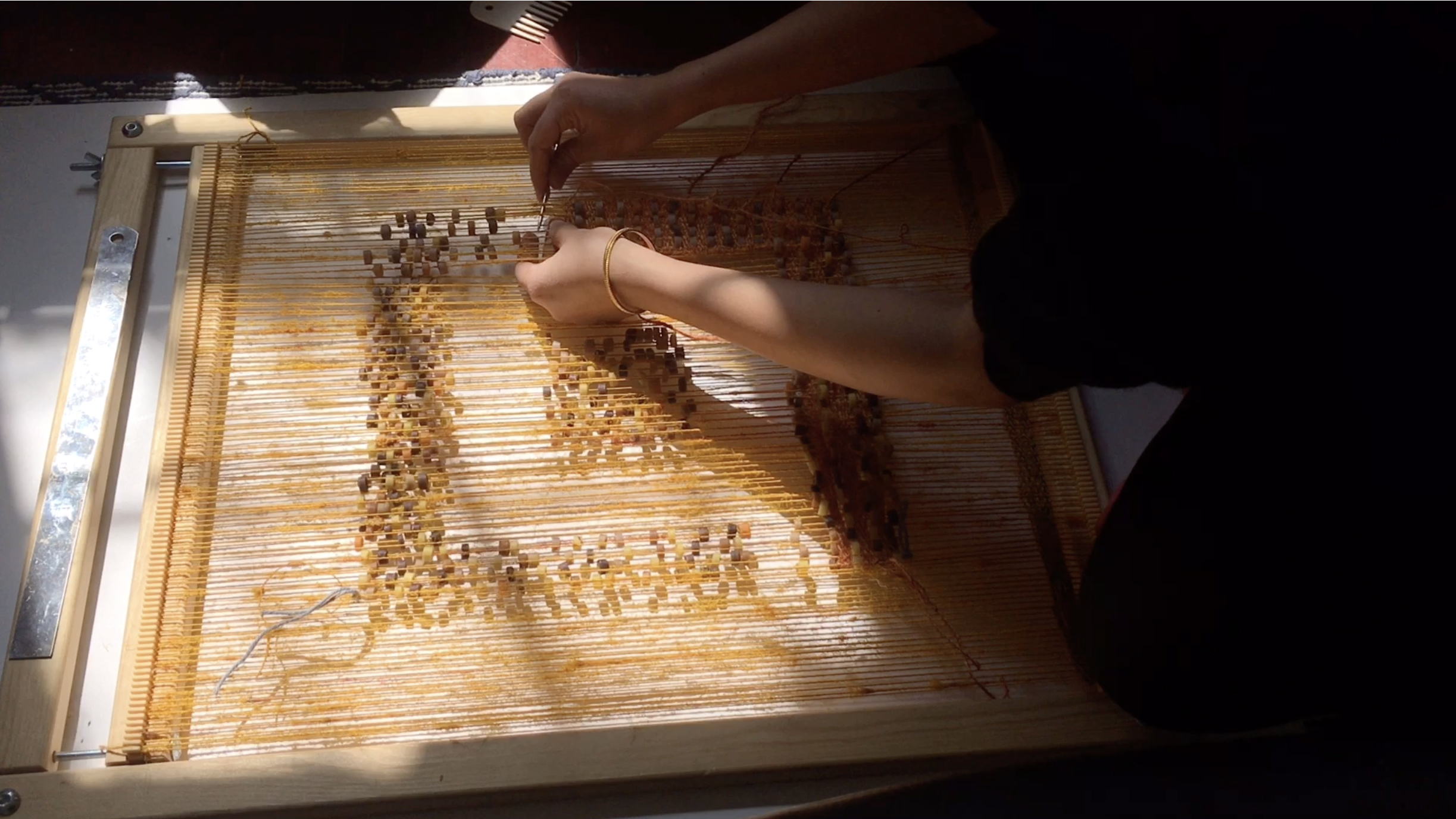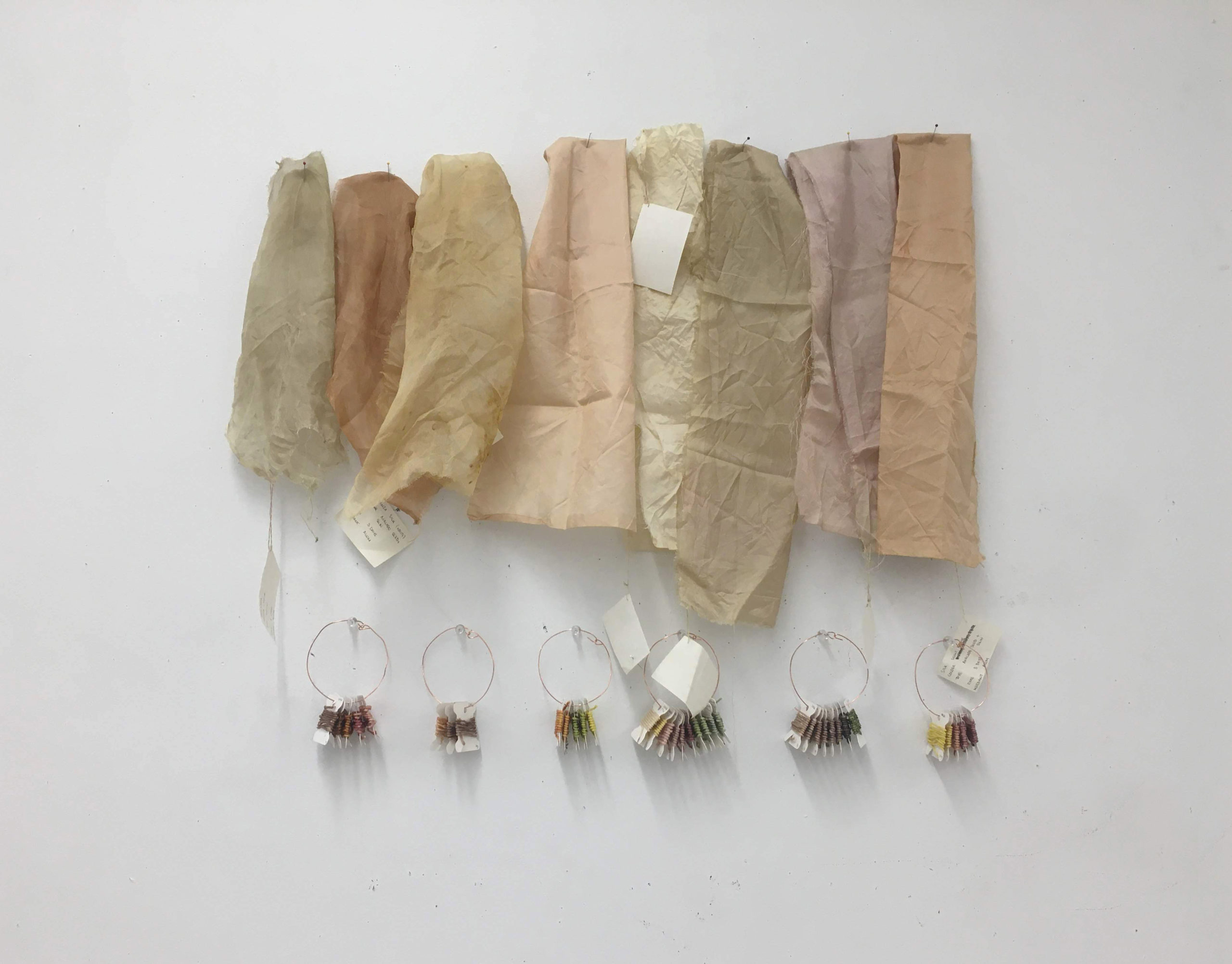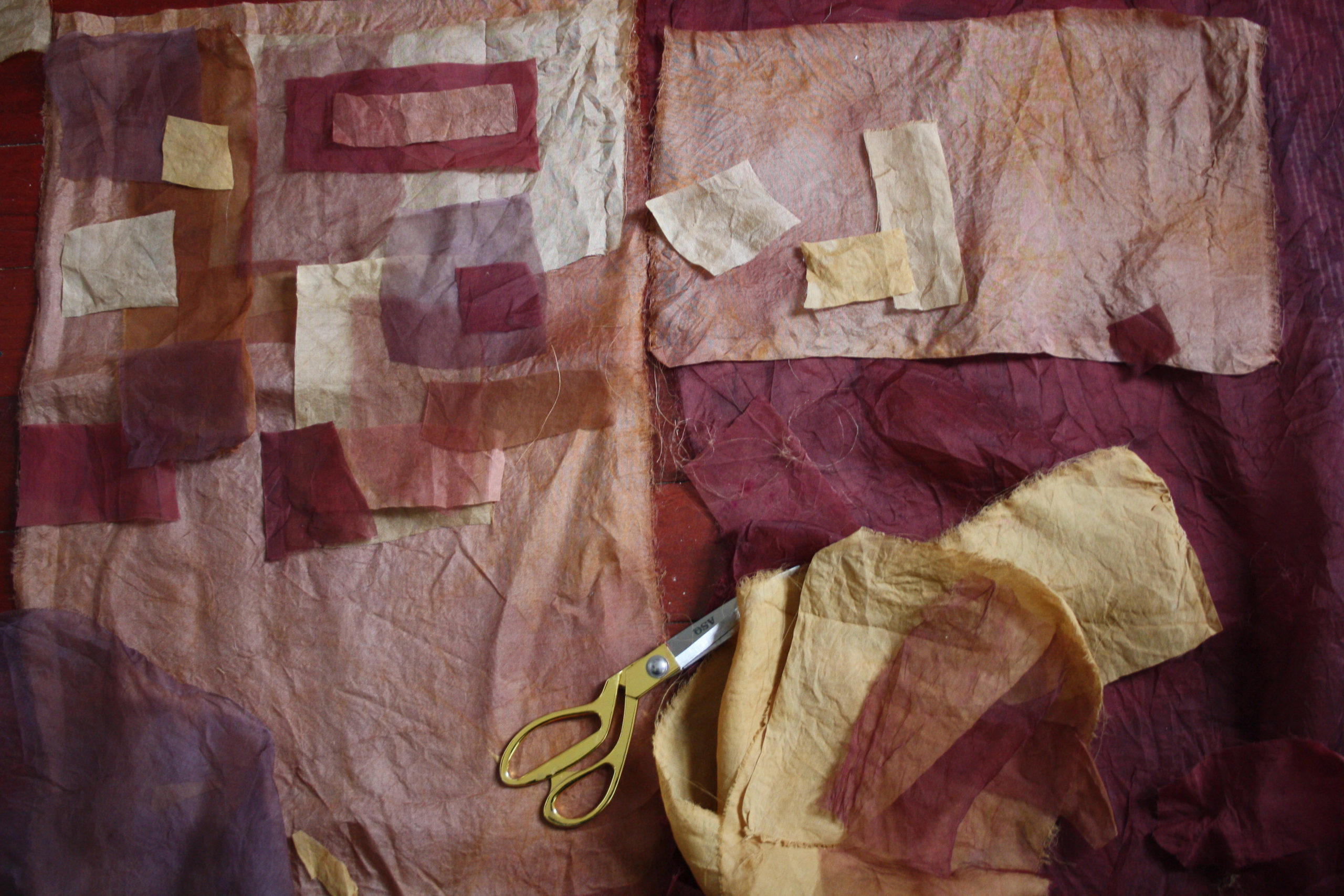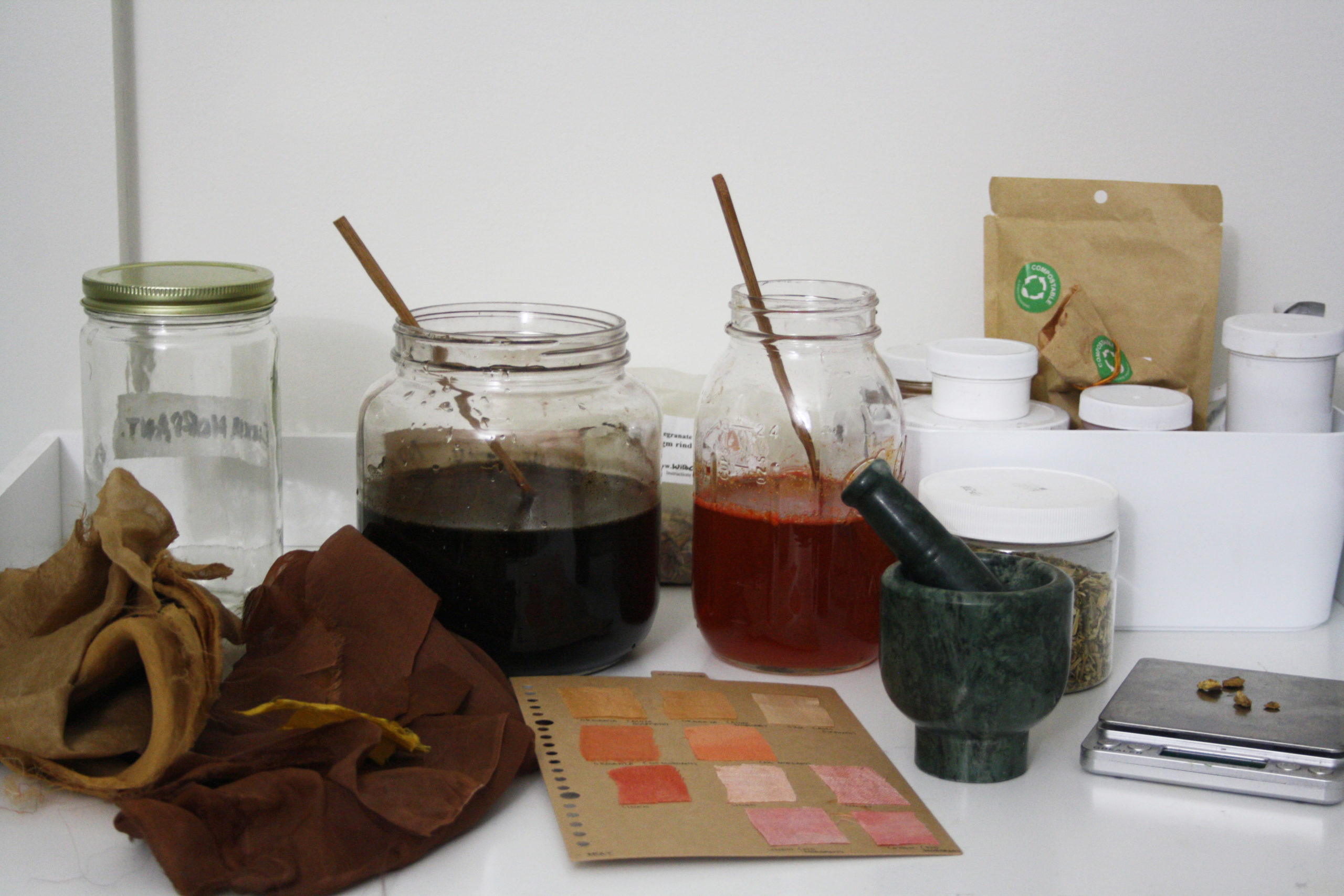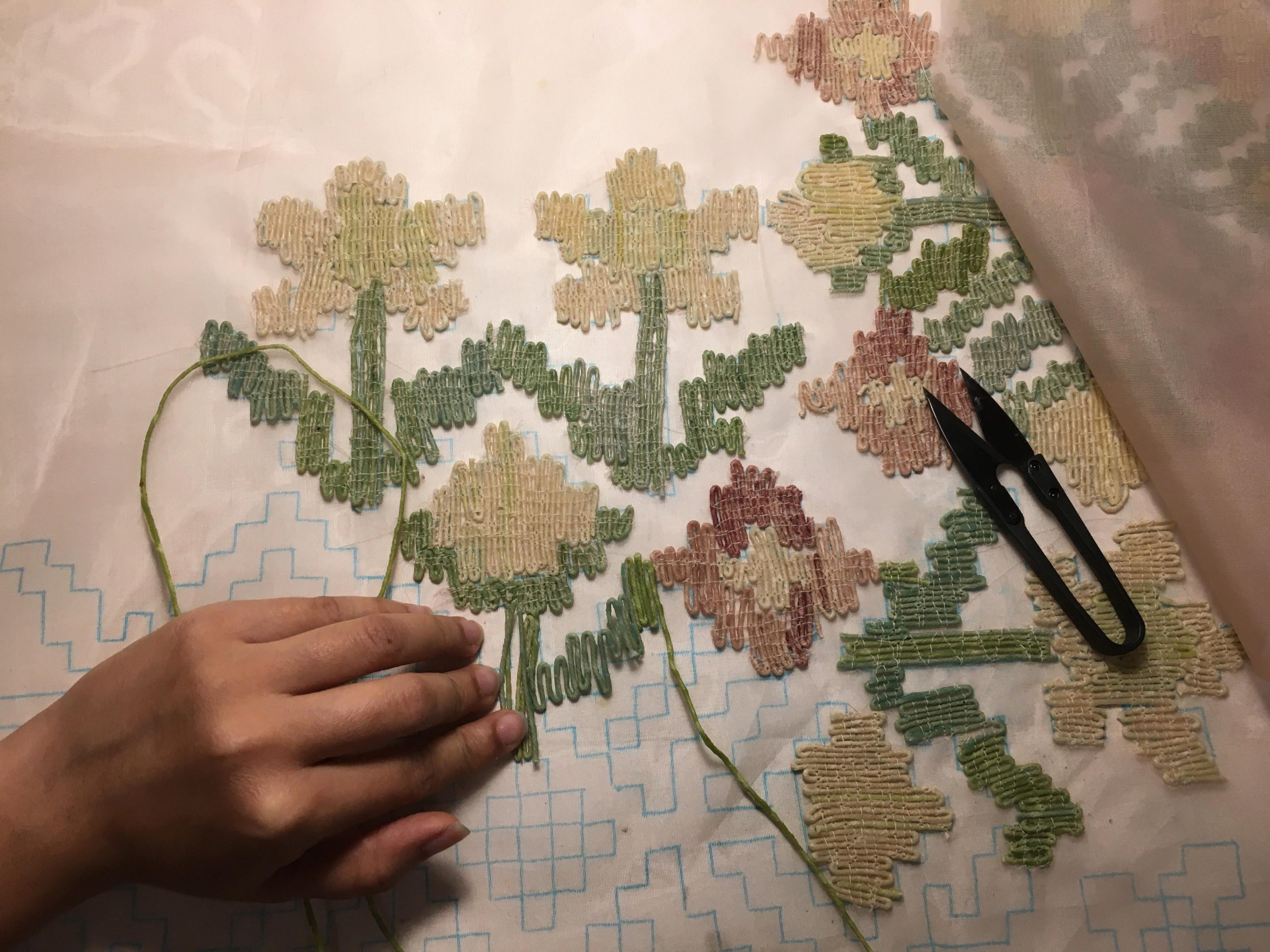For many of us, staying home has meant digging in to our crafts and dwelling in our work space. This series spotlights the spaces and inspirations of weavers, spinners, and dyers within and beyond the Weavers Guild MN community. We are grateful to New York-based textile artist Pallavi Padukone for allowing us a glimpse into their practice.
WGM: Tell us about yourself and introduce your practice
PP: I’m a textile designer and artist and recently graduated with an MFA in Textiles from Parsons School of Design. I experiment with techniques of weaving, embroidery, natural dyeing, and innovating with sustainable materials. My design practice strongly believes in the philosophy of respecting craftsmanship, the handmade and the slow.
WGM: Tell us about your space
PP: I’m currently working out of my apartment in New York. This year has taught me to adapt and make the most of the space and materials I have access to. Earlier this year, I was working on a floor loom, which I enjoy using. Currently, I work more with the tapestry loom, even constructing makeshift looms out of laser-cut board or wooden frame and nails. What I love about textiles is that you can get really creative with the making process.
PP: Since I work indoors, I am constantly rearranging my furniture. I use the floor, table, desk, any space that I can occupy, and use my kitchen to carry out my dyeing experiments. I love to sit by the window, plug in my headphones, and just weave as the room fills with the light at the golden hour.
WGM: What processes and techniques do you use in your work?
PP: My recent work ‘Reminiscent’ explores the relationship of living in an urban environment and craving the sensorial experience of being amidst nature and exploring the idea of home. The sense of smell is a powerful catalyst to trigger memories and feelings of calm and comfort. Reinterpreting the fragrance industry, I use textiles as aromatherapy to condense time and distance and create an immersive experience to reconnect with nostalgia. I play with fragrances each bearing a strong connection with my South Indian heritage, which stimulates the senses with a feeling of familiarity. Creating a system of fragrant embellishment, I developed a scented natural coating for cotton yarn and beads using beeswax combined with a tree-based resin, essential oils, and natural pigments for color. They are interwoven, embellished, and embroidered onto textiles and wall hangings.
WGM: What materials and tools are you working with?
PP: I work with fibers like cotton and linen sourced from stores in the city and sari silk recycled and sourced from India. Organza silk is a fabric that is incorporated into much of my work because I love its delicacy and transparency. The Glimakra Freja Tapestry loom and my sewing machine have been integral in my making process.
PP: My time at Parsons made me rethink my use of materials and processes to involve a more conscious approach. I delved into the fascinating world of natural dyes, learning from Mari Pombo and her studio Fragmentario in Brooklyn. Working with my hands brings me a sense of comfort and my approach often involves, sketching, experimentation, testing, and documenting.
WGM: Where have you been finding inspiration?
PP: I’m often influenced by nature and I draw inspiration from my surrounding landscape for patterns and my color palette. I’m trying not to be afraid of incorporating bright colors, which comes through in my recent work, though I initially gravitate towards neutrals or deep earthy tones. Mrinalini Mukherjee, Aurèlia Muñoz, and Julia Lohmann are some of the artists that I look up to for their innovation and command over materials and techniques.
PP: One of my favorite pieces I worked on was a handwoven installation epitomizing my version of the Kalpavriksha – Tree of Life. In Indian tradition, a tree is not just an object of nature but is treated as a shrine, a source of bounty. In South India, the coconut palm is eulogized as this mythological because every part of the tree and each layer of the fruit has value and utility. I collaborated with Hand-loom sari weavers from India, Ashwath Narayan, and his son Devaraj to execute the installation that was part of a traveling exhibit for the project Tales of Malabar funded by the Dutch Consul General in New Delhi. What I enjoyed about this project, more than just creating the art piece, was traveling to parts of Kerala, sourcing raw fiber for the weaves, and unraveling and documenting stories about the importance of the coconut in Malabari culture.
Connect:
Website: https://www.pallavipadukone.com/
Instagram: @pallu.padu

